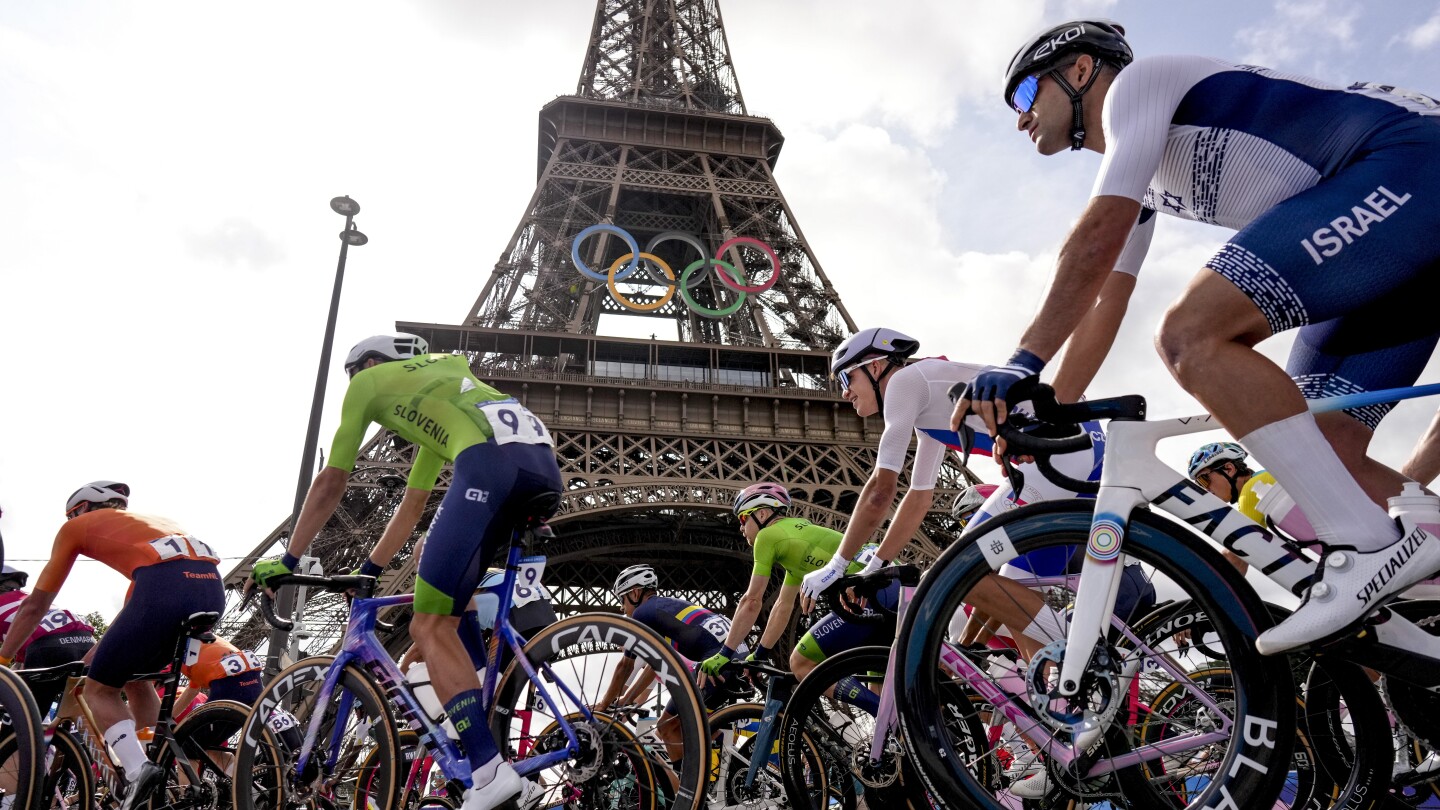By Dave Skretta
PARIS (AP) — The road races in cycling at the Olympics are an opportunity for the host city to shine.
The routes that the men and women traverse over several grueling hours and hundreds of kilometers of racing typically pass some of its most iconic historical and cultural landmarks. They provide a stunning backdrop to the marquee event of the cycling program at the Summer Games, while making for spectacular pictures on TV as the riders zip by at high speeds.
Few cities can match Paris when it comes to historical and cultural landmarks.
The course for the men covers 273 kilometers (170 miles) on Saturday while the women covers 158 kilometers (98 miles) on Sunday. And here is a look at what riders will see as they covered the cobbles and tarmac in the race for a medal:
Pont d’Iena and the Eiffel Tower
The start of the men’s and women’s road races is the Pont d’Iena, the bridge crossing the River Seine commissioned by Napoleon to celebrate his victory at the Battle of Jena. It connects the Trocadéro on the Right Bank, which was the highlight of the opening ceremony just over a week ago, to the Eiffel Tower on the Left Bank, where the Olympic beach volleyball stadium was built.
Palace of Versailles
The races will head west out of Paris on their way to Versailles, the former royal hunting lodge-turned-opulent residence that was commissioned by King Louis XIV and used by Louis XVI and Marie Antoinette. The spectacular palace is a UNESCO world heritage site. It contains more than 2,300 rooms, including the famed Hall of Mirrors, along with picturesque gardens that have served as the backdrop for Olympic equestrian events during the Paris Games.
The French Countryside
The road races will continue deep into the countryside. They pass the Vélodrome National de Saint-Quentin-en-Yvelines, where the French completed the first podium sweep of an event at the Summer Games in a century in men’s BMX racing Friday night, and where track cycling begins Monday. They also will flash by Le Golf National, the site of the 2018 Ryder Cup and the men’s and women’s Olympic golf tournaments, before hitting the Vallée de Chevreuse, where the Yvette River flows.
Sightseeing in Paris
The parade of iconic locations truly begins when the riders return to Paris. They will catch a glimpse of the Eiffel Tower and the Louvre, where the Mona Lisa by Leonardo da Vinci hangs, and Palais Garnier, the famed opera house. Later, they traverse the Canal St. Martin, which runs south to the Seine, and visit lesser known sights such as Café des Deux Moulins, named in part for the nearby Moulin Rouge and famous after appearing in the film “Amélie.”
Montmartre and Sacré-Coeur
The men’s and women’s races will likely be decided by finishing circuits at Montmartre, the hill in the northern part of Paris that is popular among artists and offers grand vistas of the city. The sharp climbs and uneven cobbled surfaces will make for a difficult test for the riders, but the sight of brightly colored jerseys whizzing by the white-domed basilica of Sacré-Coeur should provide one of the most memorable moments of the Olympic road race.
The race to the finish
After their third trip up Montmartre, riders head down toward the Seine and cross the Pont du Carrousel, which connects the Louvre on one bank to Musée d’Orsay on the other bank. The roads eventually widen as riders take a right-hand turn and follow the river back to the finish, where they cross in front of the Eiffel Tower on a flat run-in to the line.
“The routes of the Olympic road cycling events will showcase the beauty of Paris in the most captivating way,” Paris mayor Anne Hidalgo said of the course. “Trocadéro, Montmartre, Bois de Vincennes, Pont Alexandre III — some of the capital’s most beautiful sites — will serve as the backdrop for exciting races, bringing joy to cyclists and spectators alike.”
___
AP Olympics: https://apnews.com/hub/2024-paris-olympic-games

